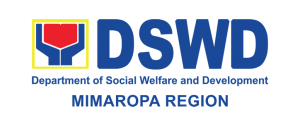
MALATE, Manila- According to the Listahanan of the Department of Social Welfare and Development (DSWD) MIMAROPA, there are 58,528 identified poor households or 317,924 individuals belonging to the Indigenous Peoples (IP) group. It comprises 28.2 percent of the total poor households in the region.
Listahanan, a government mechanism to identify the real poor, shows that there are 5,664 IP households living in rural barangays while 52,864 households are living in urban barangays.
Most of these poor IPs are found in the provinces of Palawan with 38,463 households and in Oriental Mindoro with 10,323 households. Moreover, there are 7,876 IP households in Occidental Mindoro and 1,862 IP households in Romblon. Though Marinduque is a non-IP province, there are four IP households identified as poor.
Listahanan assessment and validation was conducted from March to December 2015 which identifies 207,863 poor from the 569,316 total households assessed.
Demographic Profile
Listahanan database reveals that Palaw’an tribe top the list among the highest number of poor IP with 13,390 households followed by the Cuyunon tribe with 10,152 poor households.
There are 5,196 IP solo parents regionwide, 1,752 are male while 3,444 are female. Also, 2,879 are identified pregnant women during the conduct of listing.
For the IP marital status, 200,767 individuals are single, 110,630 individuals are married, 4,891 individuals are widowed and 1,204 are separated from their partners.
In terms of educational attainment, 107,444 (34%) IP individuals aged 3-year old and above are attending school while 210,480 (66%) IP individuals are not. Moreover, records show that there are 948 IP college graduates; 18,140 individuals are high school graduates; 35,279 individuals are elementary graduates and 91,532 individuals aged 3-year old above have not completed in any grade level.
For health and sanitation, 38,429 IP households practice open defecation and 34,868 households have no access to safe water supply. These households are mostly living in far flung and isolated areas where accessibility to safe water source and sanitary toilet facility are one of the major problems.
Highest number of toiletless IP households and without access to safe water are in Panaytayan, Mansalay and Lisay, Bongabong in Oriental Mindoro and Taburi, Rizal in Palawan.
Government Social Services
From 2009 to present, 36,263 poor IP households received social programs and services from both national and local government agencies.
Aside from the free birth, death and marriage registration, Listahanan records 27,194 IP households served by the Pantawid Pamilyang Pilipino Program; 23,524 households enrolled to Philhealth; and 16,087 households are Modified Conditional Cash Transfer (MCCT) program beneficiaries.
“MCCT is a conditional cash transfer program for indigenous cultural communities/ indigenous peoples or ICC-IPs that bridges the gap, and navigate the way towards the development of ICC, particularly those in geographically isolated and disadvantaged communities,” said DSWD Regional Director Wilma Naviamos.
Aside from this, there are 631 IP senior citizens aged 60 years old and above received P500.00 monthly stipends through the government Social Pension Program.
DSWD also provides quick interventions to the IPs and other marginalized and disadvantaged sectors in times of crisis. The Department consciously rally to abide by its direction of reaching the unreached and isolated for the ‘Tunay na Malasakit sa mahihirap at Maagap at Mapagkalingang Serbisyo sa mamamayan’, Naviamos said.###
![]()


